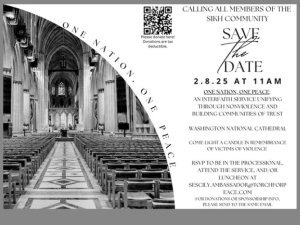Love and Shadow Boxing: Part 2 (Note: Part 1 of this article is here)
Looking into history, one thing is clear. It has been a very, very long time since women have been respected on the earth. Sometime in the ancient past, matriarchal societies honored the creative power of woman. But unfortunately, for the last few thousand years, women have been considered slaves, or property, or less than animals. Our innate humanness and wisdom pushed to the side; our wombs breeding the soldiers and slaves that powerful men use to wage war on each other.
In the West, the 1960’s heralded a wake-up call from this bondage of identity for women. Guru Nanak tried to break through this prejudice 500 years ago. It is in the context of these historical truths that we need to understand the Sikh marriage, the Laavaan, created by the fourth Master, Guru Ram Das.
 In Eastern mysticism, union with the Divine occurs through
the Guru. The Guru is the medium. Ultimate Love - experiencing Divine Union
through the love of another - was historically limited to the student and his
teacher. Unfortunately, it was only men who could have a Guru. And it was only
men of certain classes in India who could aspire to have or be a Guru. The path
to Ultimate Love was denied to all women, and a large majority of men.
In Eastern mysticism, union with the Divine occurs through
the Guru. The Guru is the medium. Ultimate Love - experiencing Divine Union
through the love of another - was historically limited to the student and his
teacher. Unfortunately, it was only men who could have a Guru. And it was only
men of certain classes in India who could aspire to have or be a Guru. The path
to Ultimate Love was denied to all women, and a large majority of men.
Guru Ram Das took this paradigm and blew it wide open. Rather than a student finding union through a Guru, Guru Ram Das opened a new pathway. Marriage offered a blended path where a man and woman could find union with each other through the Guru. And where they could find union with the Guru through each other. With the Guru as the intermediary, marriage has the possibility of allowing two people to merge and experience that Ultimate Love.
What does that mean, practically speaking? How does that look? What is the process? Each couple is unique. There is a no rational outline to describe how the Guru takes two people, uses their relationship to burn their karmas, and creates the state of consciousness where Love and Union is experienced and lived. However, there are some general guidelines for marriage that we can practice to give the Guru a chance to work His magic.
First – Have a daily sadhana. Chant and meditate.
In Part 1 of this essay, we discussed the monsters hidden in the subconscious mind. These monsters bring a lot of unhealthy preconceptions about the opposite sex to the table, and they invariably rear their ugly heads under the pressure cooker of marriage. When we meditate, it gives us a space to say, “Wow – that is not my partner at all. That is completely MY stuff.” It creates an inner sensitivity where we can separate our neurosis, phobias, and karmic issues from the reality of the relationship. Like butter being heated to become ghee, the impurities rise to the surface. A daily sadhana gives us tools to skim those impurities away, so the higher quality of the relationship can live.
Meditation and self-reflection also help us develop compassion. When we start to take responsibility for “my monsters,” we can also begin to see the monsters that our partner has within him or her. Just as sadhana and the Guru’s grace are the only powers to clear our own blocks, we understand that that is true for our partner as well. If we recognize that the Guru is in charge of the relationship, the heart opens. Instead of fights, resentments, anger or shame, we develop compassion for one another - a selfless love where we vibrate for each other.
Another guideline for marriage is: sexual discipline and containment.
There is a reason to stay abstinent before marriage, and a reason to stay faithful during marriage. Sex feels really good, and it is a great distraction. If we start engaging each other sexually before the commitment is there, then the process of merger begins and the shadows start to do their dance. But without the Guru’s guidance, that shadow boxing can tear us apart. One day, someone you used to love with all your heart is someone you will never speak to again. These tragedies exist. By giving our sexuality to the Guru, we create a protection for ourselves, for the person we love, and for those around us.
Sex is like a nuclear reaction. It can light up a city or it can destroy a city. It just depends on whether there is a containment field around it. And a committed marriage before the Guru provides that containment field.
During a relationship, when the shadows begin to make their presence felt, cheating on a partner, or looking for energy from someone of the opposite sex, also blocks the path of Love and Union. It is an escape, a way to avoid looking at our feelings, and what they are trying to tell us. Like any spiritual discipline, marriage requires that you put in the effort. Sexual faithfulness within the relationship keeps the partners focused on the work they need to do with each other.
Service to the community is a third tool for clearing the shadows, and experiencing Ultimate Love. Sometimes, relationships can be too focused on what “we want” or what “our problems” are. Through service, the marriage relationship becomes about “what we can do for others.” That opens a doorway to selflessness and joy which feeds the connection two partners have.
There is an incredible promise of love between those who marry. But there are also thousands of years of exploitation, rape, pain, prejudice and dishonor gathered in our collective subconscious. Men and women both need to do the work to heal themselves so they can honor each other. This cannot be done in a vacuum. It requires that two people make a commitment, develop their consciousness and live in service. The good news is we are not meant to take this healing journey alone. By bowing in front of the Guru in marriage, the couple allows the Guru to take the reigns of their life and their relationship with each other. With the Guru’s grace, guidance and blessing, all things become possible.
With Divine Light,
(Note: Part 1 of this article is here)





